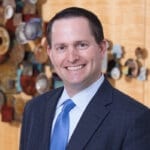New York State Department of Health Discusses Future of Urgent Care and Freestanding Emergency Room Regulations
September 30, 2013 | |On September 13th, the New York State Department of Health’s (“DOH”) Public Health and Health Planning Council’s Health Planning Committee (the “Committee”) convened a meeting in New York City to discuss the oversight of various ambulatory service settings. Specifically, the Committee discussed freestanding emergency departments (“FEDs”), urgent care clinics, upgraded diagnostic and treatment centers, and retail clinics. The discussion focused on increasing the regulatory oversight of the various services, licensure, accreditation and possible changes to governing regulations.
As a general matter, FEDs are defined as emergency departments that are not located on a hospital campus. Whereas urgent care clinics may offer imaging or lab services depending on the particular facility, FEDs will have those services on-site. FEDs are reimbursed at a higher rate than other facilities, but also provide a higher level of care through its staff of emergency medicine physicians and nurses. Urgent care clinics generally provide patients with care for illnesses or traumas that are not emergent or life-threating. They can perform some medical procedures, such as administering IV fluids, suturing, and imaging or lab services if so equipped. They do not, however, provide any ongoing or inpatient care. Urgent care centers are currently classified as either physician’s practices or licensed as diagnostic and treatment centers. Retail clinics are health clinics that operate in pharmacies, supermarkets, and even some “big box” stores, such as Wal-Mart and Costco. They generally offer basic screening services for chronic diseases and basic healthcare for minor illnesses, as well as immunizations and boosters.
Initially, the discussion at the meeting focused heavily on FEDs. In the Committee’s recommendations released before the meeting, it was recommended that FEDs not receive a new definition or section of law, but instead be required to adhere to the current law for Emergency Services.[1] By falling under this category, a FED will be required to provide all the services and care any emergency department would be required to. However, a significant part of the discussion of FEDs focused on whether there should be a change to the regulations that would allow them to operate less than 24 hours a day. The proposal was backed by data presented by Adirondack Health Systems and St. Luke’s Cornwall Hospital showing the low number of emergency department visits they received between the hours of 11 p.m. and 11 a.m. Representatives of both Adirondack and St. Luke’s were at the Committee meeting to explain their desire to downgrade existing structures to FEDs and operate those FEDs less than 24 hours a day. The Committee seemed amenable to this change in operating hours. There was also a brief discussion regarding eliminating the Certificate of Need requirements (“CON”) for FEDs, but there was a general consensus among the Committee members that the requirement for a CON should remain.
Next, the meeting turned briefly to urgent care clinics, and specifically their relationship to FEDs. One of the most-talked about issues was the naming of these clinics and FEDs. There was concern that urgent care clinics frequently use terms such as “emergency care” or “immediate care.” In their recommendations, the Committee stated that these phrases, as well as any other terms that imply a full range of services, be prohibited from use. This sentiment was reinforced by Committee members at the meeting, who were specifically concerned that the terms could confuse the general public if the need arose to be treated at an emergency department and not simply an urgent care center. There was also some discussion about the reimbursement models for urgent care clinics and FEDs. The current approach reimburses urgent care centers under physician’s billing rates, while FEDs are reimbursed at a level closer to hospitals if they meet the criteria of an FED (under the Medicare definition). However, there was a consensus around keeping that approach of reimbursing FEDs at a higher rate than urgent care centers. Finally, the Committee considered and advanced the idea of lowering the licensure requirements for diagnostic and treatment centers (which could affect urgent care centers, depending on their structure) to remove the “need” requirement. Essentially, this would allow licensure of such facilities without the DOH having the authority to limit the number and placement of the facilities.
The Committee did not, however, address the manner in which it plans to proceed with its recommendations. Under the Public Health Law, which covers medical facilities, the DOH (and therefore the Committee) can promulgate regulations. However, under the Education Law, which covers the licensure and responsibilities of professionals, DOH has no regulatory authority. The Committee gave little indication of whether it would attempt to qualify these practices as health care facilities under the Public Health Law, and therefore have the power to issue regulations, or merely make recommendations to the Legislature to amend the Education Law. The Committee has, however, stated that it will issue a draft report with recommendations on November 20th, and will follow that report with open meetings to discuss its content on November 20th and 21st in Albany.
[1] 10 NYCRR § 405.19.



